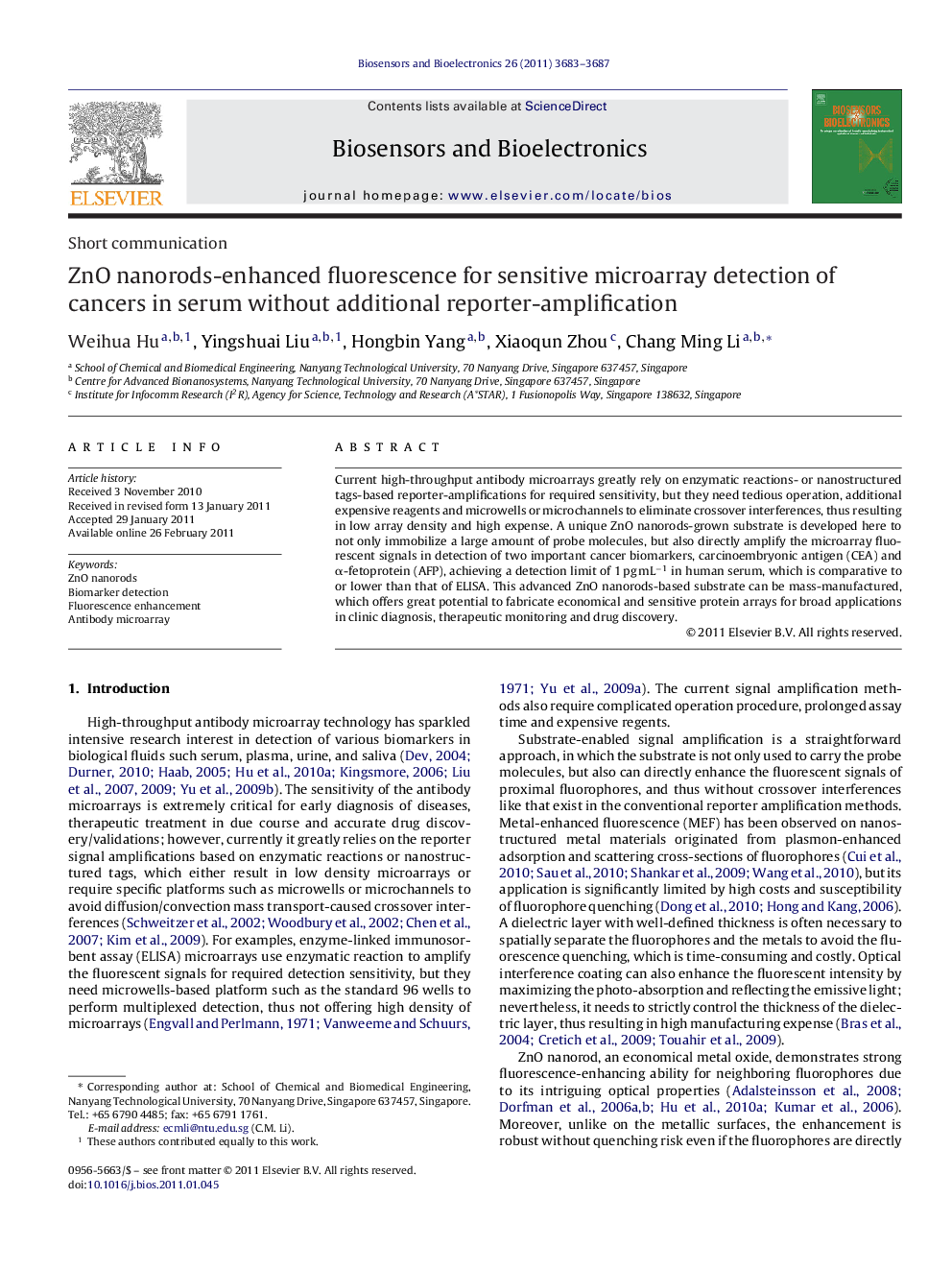| Article ID | Journal | Published Year | Pages | File Type |
|---|---|---|---|---|
| 867829 | Biosensors and Bioelectronics | 2011 | 5 Pages |
Current high-throughput antibody microarrays greatly rely on enzymatic reactions- or nanostructured tags-based reporter-amplifications for required sensitivity, but they need tedious operation, additional expensive reagents and microwells or microchannels to eliminate crossover interferences, thus resulting in low array density and high expense. A unique ZnO nanorods-grown substrate is developed here to not only immobilize a large amount of probe molecules, but also directly amplify the microarray fluorescent signals in detection of two important cancer biomarkers, carcinoembryonic antigen (CEA) and α-fetoprotein (AFP), achieving a detection limit of 1 pg mL−1 in human serum, which is comparative to or lower than that of ELISA. This advanced ZnO nanorods-based substrate can be mass-manufactured, which offers great potential to fabricate economical and sensitive protein arrays for broad applications in clinic diagnosis, therapeutic monitoring and drug discovery.
